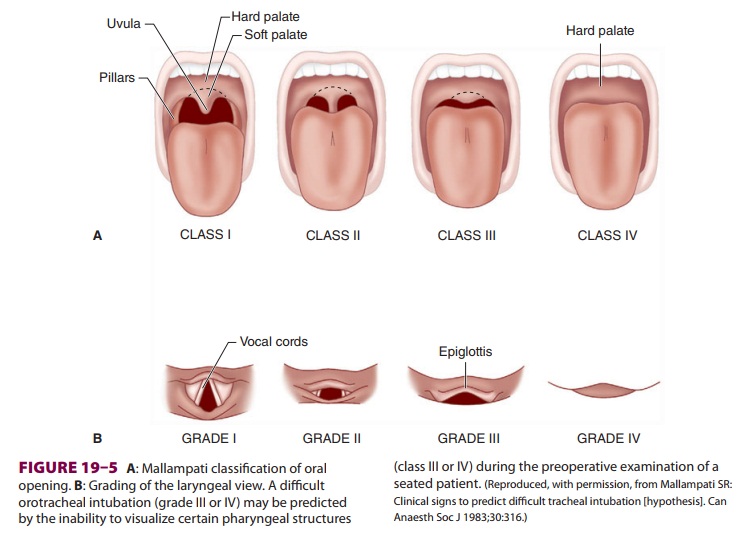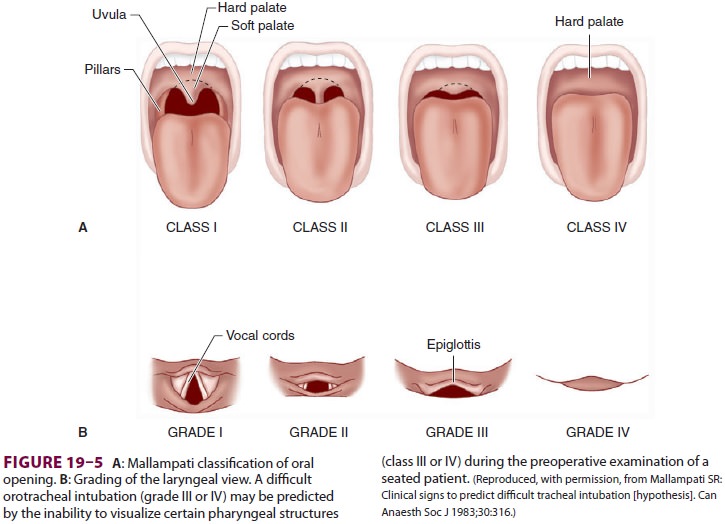Chapter: Clinical Anesthesiology: Anesthetic Management: Airway Management
Airway Assessment

AIRWAY ASSESSMENT
Airway assessment is the first step in
successful airway management. Several anatomical and func-tional maneuvers can
be performed to estimate the difficulty of endotracheal intubation; however, it
is important to note that successful ventilation (with or without intubation)
must be achieved by

the anesthetist if mortality and
morbidity are to be avoided. Assessments include:
·
Mouth
opening: an incisor distance of 3 cm or greater is desirable in an adult.
·
Upper
lip bite test: the lower teeth are brought in front of the upper teeth. The
degree to which this can be done estimates the range of motion of the
temperomandibular joints.
·
Mallampati
classification: a frequently performed test that examines the size of the
tongue in relation to the oral cavity. The greater the tongue obstructs the
view of the pharyngeal structures, the more difficult intubation may be (Figure 19–5).
o Class I: the entire palatal arch,
including the bilateral faucial pillars, are visible down to their bases.
o Class II: the upper part of the faucial
pillars and most of the uvula are visible.
o Class III: only the soft and hard
palates are visible.
o Class IV: only the hard palate is
visible.
·
Thyromental
distance: the distance between the mentum and the superior thyroid notch. A
distance greater than 3 fingerbreadths is desirable.
·
Neck
circumference: a neck circumference of greater than 27 in is suggestive of
difficulties in visualization of the glottic opening.
Although the presence of these findings
may not be particularly sensitive for detecting a difficult intubation, the
absence of these findings is predic-tive for relative ease of intubation.
Increasingly, patients present with
morbid obe-sity and body mass indices of 30 kg/m2
or greater. Although some morbidly obese patients have rela-tively normal head
and neck anatomy, others have much redundant pharyngeal tissue and increased
neck circumference. Not only may these patients prove to be difficult to
intubate, but routine ventilation with bag and mask also may be problematic.
Related Topics